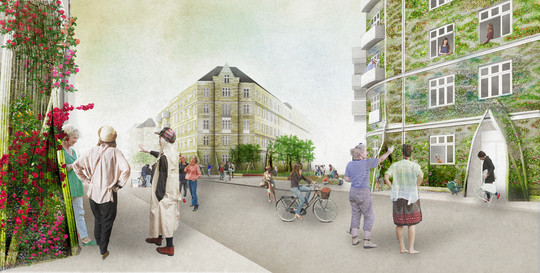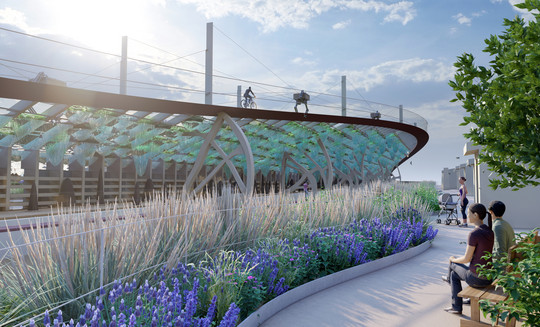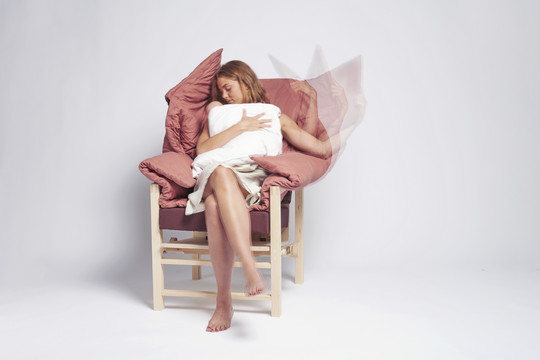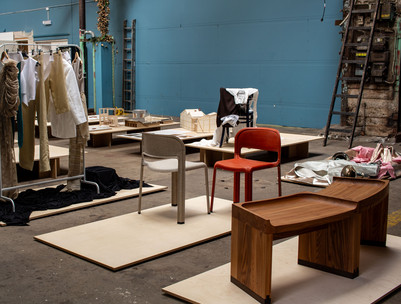
SOLUTIONS 2020: 225 innovative visions for a sustainable future
Climate. Health. Democracy. Sustainability. In our digital graduate exhibition SOLUTIONS 2020, more than 200 recent graduates of KADK present their vision for how architects and designers can address the challenges facing the world.
This year KADK has developed a brand-new exhibition format to replace the physical raduate exhibition thus overcoming the creative obstacles posed by the COVID-19 situation.
More than ever before, this year’s graduates have embraced the challenge of creating innovative, specific proposals for construction and design in a future of scarce resources. How do we cool our cities sustainably? How can we incorporate carbon-neutral materials into our construction processes? And how is it possible for design solutions to improve public health for the benefit of individuals and society in general?
Facades of vegetation to cool down cities
Through her project ‘Bio-scaffolds for Urban Greening’, architect Ruxandra-Stefania Chiujdea tackles the problem of rising temperatures in our cities. When buildings become unbearably hot to be in, we will start using lots of energy to cool them. This is a costly, polluting solution. With this in mind, the architect has created individually adapted facades of vegetation to keep heat away from the city’s multi-storey buildings. The facades are frames that have been 3D printed in a biodegradable material and serve as the plants’ growth medium.
She is just one of many graduates who are innovatively addressing the climate crisis.

Horticultural landscape across city rooftops
Architect Agnes Josefin Hekla imagined a future of food shortages in urban areas and developed the project ‘Green Structures of Copenhagen’, in which she proposes a horticulture landscape built across city rooftops and car parks.
As it is based on data on the size of urban areas and consumption statistics, the technically well-thought-through project has the potential to turn Copenhagen into a self-sufficient agricultural region.

Bacterial textile dye
Designer Monica Louise Hartvigsen is responsible for the project ‘Bacterial Dye – the pigment of the future’. She demonstrates how it is possible use bacteria (rather than chemicals) to dye textiles in deep, bright colours equivalent to the synthetic dyes we know today. The source of inspiration for developing the technology was bacteria research conducted at the Technical University of Denmark. Her method uses less energy than conventional dyeing and can be scaled up for industrial use.
Several other design school graduates have created health-promoting projects, such as Alexandra Rendtorff and Amalie Gielov’s ‘Healing Product Design in a Neonatal Context’, a piece of nurturing and caring furniture that enables a premature infant to bond with its mother, rather than having to spend its first weeks or months in an incubator.

Far-sighted and responsible projects
Rector at KADK, Lene Dammand Lund, is proud of the results the graduates have achieved.
“The projects show that our students are adept designers, as well as radically creative and concrete thinkers when it comes to taking on the biggest challenges facing society. Since 2016, KADK has been deeply involved in determining how design and architecture can help achieve the UN Sustainable Development Goals and, while major challenges still exist at the global level, we are really proud of all the creativity and innovation that is awakened here at our institution. In addition to their high artistic calibre, this year’s projects are far-sighted and responsible,” she says, "The exhibition exemplifies how the architects and designers we educate at KADK are capable of releasing enormous potential.”












